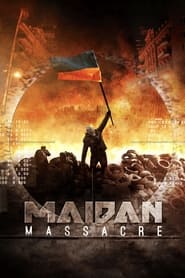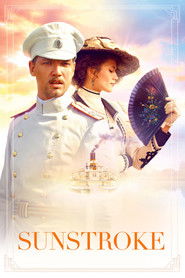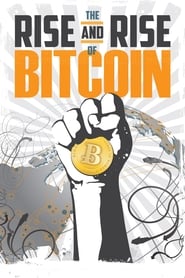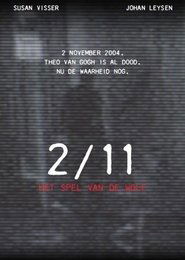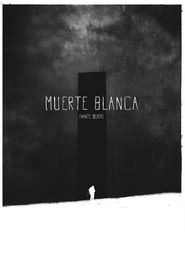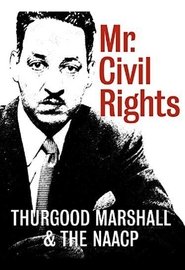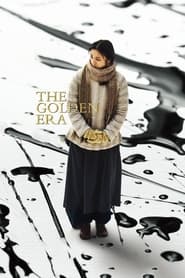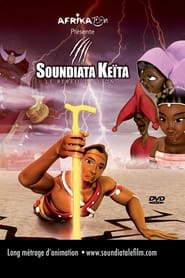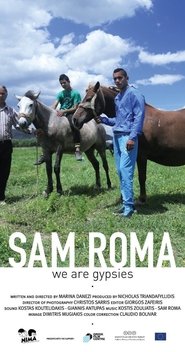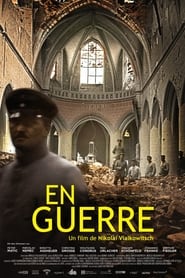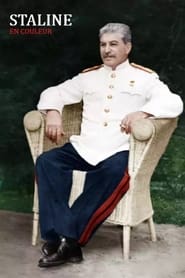New History Movies on Pantaflix - Page 336
-
Maidan Massacre
2014
Maidan Massacre
2014
star 1Maidan Massacre is an investigative documentary into the shootings which occurred on February 20th, 2014, when nearly 50 people were gunned down on the streets of Kyiv's Independence square. The massacre was the result of a massive three month long protest against the former Government of Viktor Yanukovich and his decision to reject a trade deal with the EU. Although no thorough investigation had been conducted, the blame was immediately placed on the officers who served under Yanukovich. This program investigates the scene of the crime, interviewing those who were there when the shootings occurred, and seeks to answer the questions as to who really was shooting that day on Kyiv's Independence square - a place known to the people of Ukraine, as Maidan.—John Beck Hofmann -
Sunstroke
2014
Sunstroke
2014
star 5.1In a Crimean filtration camp, after the evacuation of the White Army, an unnamed captain is haunted by memories of a brief romance as he tries to understand how the Russian Empire fell apart and who is to blame. -
The Rise and Rise of Bitcoin
2014
star 7.1A documentary about the development and spread of the virtual currency called Bitcoin. -
2/11 Het spel van de wolf
2014
star 4.42 November 2004, shortly before nine in the morning. In The Hague, the report comes in that in Amsterdam Theo van Gogh has been murdered. All warning bells start ringing. With the country in flames, sometimes literally, politicians and officials in The Hague have to neutralise all sorts of known and unknown stings, and just when Van Gogh’s cremation seems to herald a period of relative peace, a second explosion follows: the attack on the Hofstad Network in the Laakkwartier in The Hague. A reconstruction of nine days of political high tension and flying dust, a decade after the assassination of the trendsetting filmmaker and TV presenter. -
Yalom's Cure
2014
-
White Death
2014
White Death
2014
Impressionist portrait of a landscape forged by tragedy. A ghostly wanderer among the vestiges of a story where 44 young soldiers and a sergeant were pushed to their deaths -
Mr. Civil Rights: Thurgood Marshall and the NAACP
2014
Civil rights attorney Thurgood Marshall's triumph in the 1954 Brown v. Board of Education Supreme Court decision to desegregate America's public schools completed the final leg of a journey of over 20 years laying the groundwork to end legal segregation. He won more Supreme Court cases than any lawyer in American history, making the work of civil rights pioneers like the Rev. Martin Luther King, Jr. and Rosa Parks possible. -
The Golden Era
2014
The Golden Era
2014
star 6.7The story of writer Xiao Hong comes alive through memories of her great love affair, literary influence and escape from China during World War II. -
Mountain Emperor
2014
Mountain Emperor
2014
The film is dedicated to the centenary of the First World War, on the territory of the municipality of Ljubovija, and is based on true events. It tells the heroic resistance of the not very powerful but proud Sokol Brigade, made up of third-callers and recruits from the villages around Ljubovija. -
Harlem Street Singer
2014
Harlem Street Singer
2014
Harlem Street Singer tells the little-known story of Reverend Gary Davis, the great American ragtime, blues and gospel guitarist. Not only is he one of the greatest folk guitar players of all time, he also represents the sweep of popular music in America during the twentieth century. Harlem Street Singer traces his journey from the tobacco warehouses of the rural south to the streets of Harlem, and onto the 1960s folk music scene, a blind street musician and itinerant preacher who rose out of abject poverty to influence a generation of musicians from Ramblin’ Jack Elliott to the Grateful Dead. -
Angkor dévoilée
2014
-
Sam Roma: We Are Gypsies
2014
ROM people are peculiar, and their identity is lost somewhere in between the past and their roaming through the land. From India to Egypt and from Sweden to Britain the Wandering Kings of the Road are a steady part of human geography, sometimes living slightly outside the law and social acceptance. -
Im Krieg
2014
-
Pasolini
2014
Pasolini
2014
star 5.7We are with Pasolini during the last hours of his life, as he talks with his beloved family and friends, writes, gives a brutally honest interview, shares a meal with Ninetto Davoli, and cruises for the roughest rough trade in his gun-metal gray Alfa Romeo. Over the course of the action, Pasolini’s life and his art are constantly refracted and intermingled to the point where they become one. -
Stalin In Color
2014
Stalin In Color
2014
star 9March 9th, 1953, 5 million people attend Stalin’s funeral. A revolutionary lacking in both charisma and stature, Stalin came to power almost by chance, and his 30-year reign saw him become the most Machiavellian and bloodthirsty of dictators. The man who insisted on being called “The Father of the People” massacred his own countrymen, and was responsible for the death of some 20 million people. Soon forgetting his former ideological stance, he mercilessly crushed anyone who opposed him, in both word and deed. His camps for reform through hard labor – known as “gulags” – turned 18 million Russians into slaves. He not only murdered his opponents but his best friends too, and even sometimes members of his own family. His cruelty knew no bounds. Through colorized archive material rich in previously unseen footage, and many accounts from the period including some from Stalin himself, this documentary tells the story of a man who turned a dream into a nightmare. -
Kopernik vs Uczeni
2014
Kopernik vs Uczeni
2014
-
Snow on The Blades
2014
Snow on The Blades
2014
star 6.6At Sakurada Gate in 1860, the shogun’s chief minister and his retinue of bodyguards are ambushed and annihilated. Bearing the responsibility and shame for this failure is Shimura Kingo, master swordsman and chief of the guard. Forbidden to take his own life in atonement, he is instead tasked with hunting down the remaining assassins; however, fate intervenes and now only one is left. Devoted to his late lord and his duty, he relentlessly pursues the sole remaining assassin for the next thirteen years. But times are changing in Japan and the way of the sword has become outlawed. What does this mean for Kingo?
 Netflix
Netflix
 Amazon Prime Video
Amazon Prime Video
 Apple iTunes
Apple iTunes
 Apple TV Plus
Apple TV Plus
 Disney Plus
Disney Plus
 Google Play Movies
Google Play Movies
 Paramount Plus
Paramount Plus
 Hulu
Hulu
 HBO Max
HBO Max
 YouTube
YouTube
 fuboTV
fuboTV
 Peacock
Peacock
 Peacock Premium
Peacock Premium
 Amazon Video
Amazon Video
 The Roku Channel
The Roku Channel
 AMC+
AMC+
 Kocowa
Kocowa
 Hoopla
Hoopla
 The CW
The CW
 Vudu
Vudu
 Starz
Starz
 Showtime
Showtime
 PBS
PBS
 Pantaflix
Pantaflix
 FXNow
FXNow
 Tubi TV
Tubi TV
 Kanopy
Kanopy
 Comedy Central
Comedy Central
 Crunchyroll
Crunchyroll
 Microsoft Store
Microsoft Store
 Redbox
Redbox
 Sun Nxt
Sun Nxt
 ABC
ABC
 DIRECTV
DIRECTV
 Crackle
Crackle
 Fandor
Fandor
 Plex
Plex
